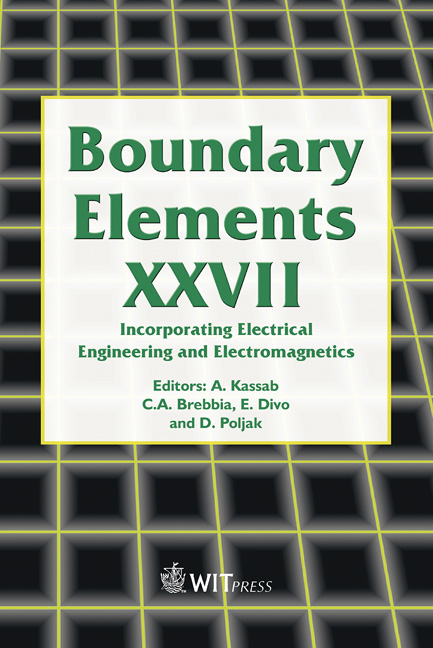The Robin Hood Method For Electrostatic Problems
Price
Free (open access)
Transaction
Volume
39
Pages
8
Published
2005
Size
1,843 kb
Paper DOI
10.2495/BE050451
Copyright
WIT Press
Author(s)
P. Lazi´c, H. Stefanci ˇ c´ & H. Abraham ˇ
Abstract
We present a new, efficient and robust method for solving electrostatic problems. The basic idea of the method is rather simple, but has not been exploited so far. The essence of the method is achieving of the equipotentiality of the conducting surfaces by iterative nonlocal charge transfer. Besides the simple physical idea, the computational behavior of the method is very appealing. It scales linearly in memory with the number of elements and it converges geometrically without the occurrence of Critical Slowing Down. The presented method can be extended in application to other types of problems, electrostatics being a very specific example in which one can remain only on the boundaries of the objects involved in the calculation. Due to high efficiency and low resource demands, this method could prove useful in many areas that require electrostatic calculations of high precision and detail—medical applications, charged particle detector/accelerator construction, printed electronics being just some of them. Keywords: boundary element, electrostatics, Robin Hood, nonlocal charge transfer, equipotentiality, Critical Slowing Down, real space DFT, numerical methods. 1 Introduction The intention of this article is to give an overview of a new numerical method, the Robin Hood (RH) method for solving electrostatic problems. Implementation details, complexity analysis and other technical features of the method are only briefly sketched. A technically detailed account is available elsewhere [4]. We would like to show ideas collected along development of the RH method and our reflections upon obtained results. Possible future expansions of application are outlined.
Keywords
boundary element, electrostatics, Robin Hood, nonlocal charge transfer, equipotentiality, Critical Slowing Down, real space DFT, numerical methods





